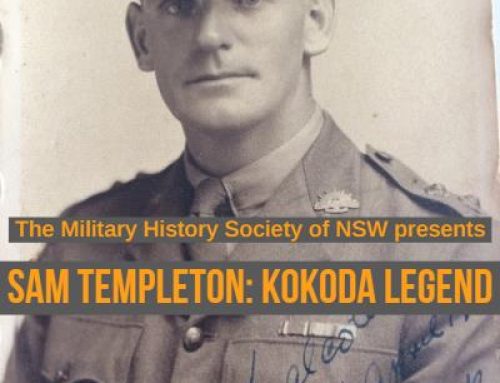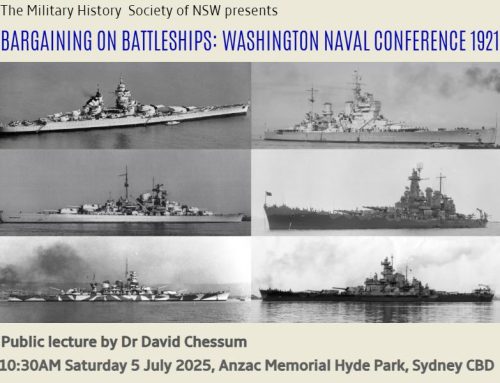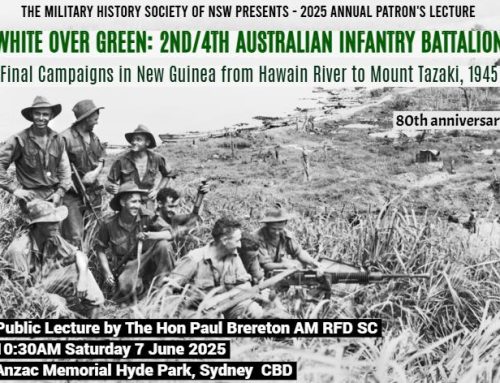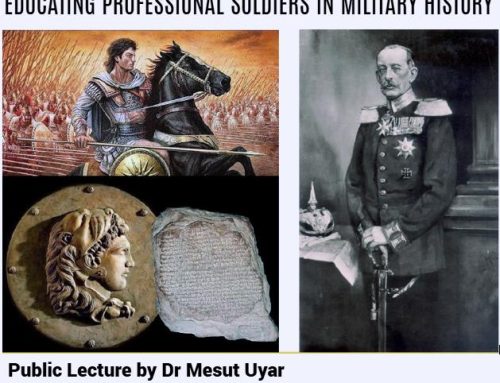An online presentation by Robin Droogleever
 War in Southern Africa between the British Empire and the two small Boer Republics of Transvaal and Orange Free State broke out on 11 October 1899. The Colony of New South Wales offered modest assistance which the British accepted. Five squadrons constituting the 1st New South Wales Mounted Rifles Regiment were sent in two separate contingents: the first arrived in Cape Town in December 1899, the second in February 1900. The first contingent consisted of an infantry company and a mounted rifles company. The enemy’s soldiers were all mounted so the mounted rifles company was used immediately. The infantry company wished it could be more actively involved. With the arrival of Lord Roberts as commander, the structure of the British Army changed. Roberts introduced more mounted infantry to counter Boer mobility. Colonial infantry companies from Australia now became mounted. In the meantime, the call had gone out to British colonies for more mounted men, so the second contingent of February 1900 were selected for their riding skills. At this time the companies (now known as squadrons) were separated from each other.
War in Southern Africa between the British Empire and the two small Boer Republics of Transvaal and Orange Free State broke out on 11 October 1899. The Colony of New South Wales offered modest assistance which the British accepted. Five squadrons constituting the 1st New South Wales Mounted Rifles Regiment were sent in two separate contingents: the first arrived in Cape Town in December 1899, the second in February 1900. The first contingent consisted of an infantry company and a mounted rifles company. The enemy’s soldiers were all mounted so the mounted rifles company was used immediately. The infantry company wished it could be more actively involved. With the arrival of Lord Roberts as commander, the structure of the British Army changed. Roberts introduced more mounted infantry to counter Boer mobility. Colonial infantry companies from Australia now became mounted. In the meantime, the call had gone out to British colonies for more mounted men, so the second contingent of February 1900 were selected for their riding skills. At this time the companies (now known as squadrons) were separated from each other.
Not until April 1900 were the five squadrons placed under a single commander, Colonel Henry de Beauvoir De Lisle, rated as one of the finest leaders of mounted troops in this war. Once made ready for the field, the history of 1NSWMR was one of constant action. By February 1900 the infantry company was mounted and deployed around Colesberg on the Central Front. The others joined Lord Roberts’ ‘Grand Army’ in its march on the Boer capitals. When guerrilla war broke out the New South Welshmen played an active role, scoring many successes against a clever and elusive enemy. Lord Roberts was so pleased with their conduct that he sent praise and thanks to the unit commander on a number of occasions: at Driefontein, Vet River, Zand River, the fall of Johannesburg and surrender of Pretoria and at the battle of Diamond Hill. De Lisle was proud to declare that: “Australia has proved itself the home of the finest mounted infantry material in the world, and I have no hesitation in asserting my belief that the New South Wales Mounted Rifles have done more hard work, and done it better than any troops which have come to South Africa.” These men were the inspiration behind creation of Light Horse Regiments of mounted infantry which performed so effectively in the Great War.
About the Presenter
Robin Droogleever was born in England but spent most of his youth and early adulthood in Natal, South Africa, where he developed an interest in both the Boer and Zulu Wars. He completed a D.Litt with the University of South Africa under the late Burridge Spies with a focus on the Zulu War. In 1992 The Road to Isandhlwana was published by Greenhill Publications in the UK. It was the story of Major Anthony Durnford’s involvement in the War with the Zulus in 1879.
Robin and his family came to Australia in 1981 and he was surprised to discover that there had been a substantial Australian involvement in the Boer War, but apart from Bob Wallace’s general history there wasn’t much that had been written on Australia’s participation. He joined a group of Boer War enthusiasts who were part of the Orders and Medals Research Society in Victoria and from this the Anglo Boer War Study Group was formed in 1993 under the late John Price. Robin succeeded John as the convener of the group which has now been running for 28 years and has a nationwide membership.
In 2000 Robin edited ‘Banjo’ Paterson’s Despatches as a War Correspondent from the Boer War. Pan Macmillan published it under the title of ‘From the Front’. In 2003 he co-authored with historian Max Chamberlain a resource book on Australian involvement in the Boer War titled The War with Johnny Boer then spent some five years researching and writing on the regimental history of the two Victorian Bushmen Contingents to the war, titled That Ragged Mob.
Upon completion of that highly successful publication (now out of print) he found himself drawn to the two earlier Victorian contingents. His wife’s grand uncle had served with the 2nd Victorian Contingent so his focus turned to that unit once That Ragged Mob had been published in 2009. Inevitably the 1st Contingent was placed on the menu as well, for the two units were closely interlinked, hence Colonel Tom’s Boys, (named after Colonel Tom Price, who commanded the VMR) and published in 2013. To complete Victoria’s contribution to the Boer War A Matter of Honour was published in 2017. This was the story of the ill-fated 5th Victorian Contingent which suffered so severely at the battle of Wilmansrust.
Robin started research on the 1st New South Wales Mounted Rifles in the Boer War as early as 2015 and titled the proposed regimental history Five Good Squadrons, due for publication in 2021.





